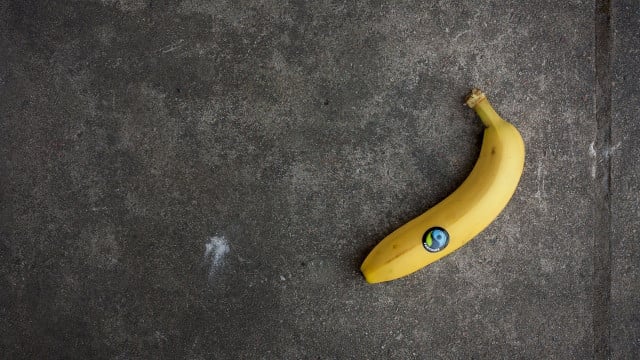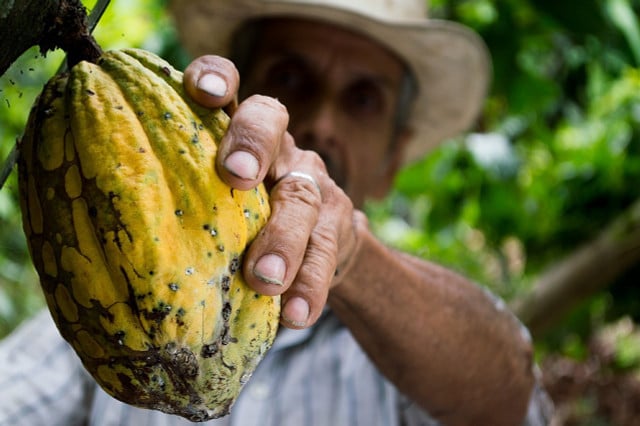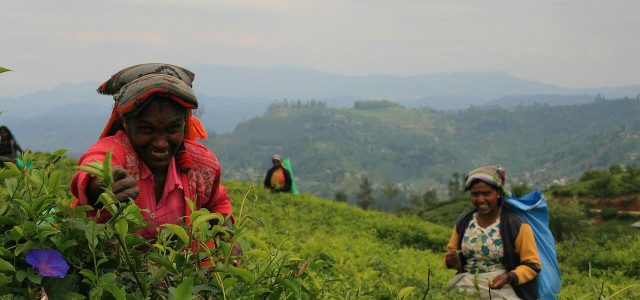Equity, respect and transparency are at the heart of fair trade's definition. Here, we dive into what fair trade is, what it does, and the controversy surrounding it.
Put simply, fair trade is when products, including food, drink and handicrafts, are sourced fairly via supply chains that benefit and remunerate farmers and producers properly. Fair trade products aim to mitigate the harm caused to farmers by unfair trading practices such as price gouging, establishing monopolies, and causing or exacerbating harm to communities or individuals.
This means paying enough for products so that farmers can not only support themselves and their families but maintain a resilient business. Rather than undercutting producers to expand a supermarket’s profit margins, fair trade aims to ensure that businesses and local communities can be adequately supported by their labor.
Fair Trade vs. Fairtrade
The Differences
When it comes to fair trade, the terms can get confusing and are commonly misused. “Fair trade”, which we’ve explained above, can be any trade that is ‘fair’ to the producers. Unlike “organic”, “fair trade” is not a protected term in the US — so any company can call their products fair trade, based on their own definition of fair trade.
“Fairtrade” (one word), on the other hand, is a certification system. Organizations award these certifications to products using certain criteria to assess the trading conditions of their supply chains. These criteria include:
- Prices that cover the costs of producing their crop or products sustainably.
- Fair, safe working conditions — including no discrimination, forced or child labor.
- Access to credit ahead of harvest time when needed.
- Stronger relationships with buyers, allowing for more financial security to plan for the future.
The Similarities
Both fair trade (the concept) and Fairtrade (the certification) strive for more justice in international trade. Both share the same belief that better conditions for farmers and producers benefit local economies, provide food stability and help to redress global wealth imbalances.
Fairtrade Organizations and What To Look Out For

(Foto: CC0 / Pixabay / IsaacFryxelius)
There are many different Fairtrade organizations, and understanding how they all operate and interconnect is complicated. Get to know the differences between these certifications and familiarize yourself with their labels and seals.
Fairtrade Foundation: Founded in 1992, this was the earliest Fairtrade formal organization. It was launched following persistent appeals for more fair trading standards from small-scale coffee farmers in Mexico.
Fairtrade International: The global multi-stakeholder group was established shortly after in 1997. 2004 saw Fairtrade International divided into two independent organizations:
- Fairtrade International: This organization develops and reviews fair trade standards. It helps new producers to join the scheme and ensures the transparency of the system via the Fairtrade Standards and Policy Committee with Fairtrade members, producer organizations, traders and external experts.
- FLOCERT: This group ensures that producers and traders comply with the Fairtrade Labelling Organizations (FLO) international standards, including investing the benefits received through Fairtrade back into their own development. Organizations that comply with these standards can have their products certified and thus receive the well-known Fairtrade seal. Only specific products that comply with FLO can have the seal, not entire companies.
Fair Trade Certified: Sometimes referred to as Fair Trade USA, this organization was founded in 1998 and is an independent, nonprofit organization that is not connected to Fairtrade (above).
World Fair Trade Organization (WFTO): This Netherlands-based group organizes and provides networking opportunities for fair trade organizations from over 70 countries worldwide. It specifically deals with fairness at the individual points in the supply and trade chain, recommends improvements and ensures that all participants adhere to the principles of fair trade. Any company that meets these requirements can use the WFTO seal.
Why Isn’t There a Single Fair Trade Organization?



(Foto: CC0 / Pixabay / larsen9236)
It’s easy to forget that the world we live in today is a lot more connected than it was in the early 1990s when Fairtrade organizations were emerging. The fair trade movement has grown organically worldwide during the last few decades. While many of the organizations currently operating have roots in early cooperatives, there is no one global body that oversees the certification of fair trade producers or products.
As we’ve seen above, many fair trade organizations have different tasks and priorities. Plus, standards, opinions and views may differ among the competing factions.
The Future of Fair Trade Looks Bright
Luckily, 2020 saw a new International Guide to Fair Trade Labels being released, with the hope of standardizing fair trade principles. Their analysis is rooted in the principles of fair trade enshrined in the Fair Trade Charter. The fair trade standards are evaluated based on how well they meet the following objectives, grounded in the UN Sustainable Development Goals:
- Focus on achieving economic growth for all sections of society.
- Improved wages and incomes for decent work.
- Empowering women and protecting children.
- Nurturing biodiversity and protecting the environment.
- Influencing public policy.
- Involving citizens in building a fairer world.
How long it will take to implement these standardizations remains to be seen. But, it presents one step closer to a coherent, global fair trade mission.
Criticism of Fair Trade
Not many people find grounds to criticize fair trade on principle. Theoretically, it’s difficult to argue against fair pay and better working conditions for the people who grow, produce and make the food and goods we buy.
There is often criticism of the Fairtrade organizations, however. Some of the most common criticisms are that fair trade is:
- Expensive: Prices of Fairtrade products tend to be higher than non-Fairtrade products, and sometimes the difference is significant. This higher price is because farmers and producers get a better deal, but still, it keeps these products out of the shopping baskets of some consumers.
- Complicated: The methods, criteria and labeling systems of Fairtrade organizations in the US are confusing. It’s hard to know whether the criteria you care about are being considered just from looking at a product label unless you do your research beforehand (which most people don’t). Despite transparency being one of the pillars of Fairtrade, this can put people off buying Fairtrade altogether. However, as we’ve mentioned above, this will hopefully change soon.
- Dishonest: Some studies have shown that little of the profits from Fairtrade corporations reach the intended targets, and sometimes they receive nothing at all from Fairtrade purchases. This, sadly, compromises the reputation of the movement in general and can indeed exacerbate poverty and instability.
- Unhelpful: Suppliers such as supermarkets stand to benefit more from the higher prices than the intended producers. Also, sometimes the label does not necessarily apply to the whole product but sometimes just refers to single ingredients.
-
Unfair: Fairtrade offers only a few farmers a higher, fixed price for their goods. These higher prices come at the expense of the great majority of farmers, who – unable to qualify for Fairtrade certification – are even worse off.
- But, Fairtrade organizations were not established with the unrealistic goal of eliminating all poverty and bettering working conditions for all workers (that’s arguably the job of governments), but rather to improve supply chains and trading conditions for workers through cooperation with the scheme.
Takeaways on The Fair Trade Concept



(Foto: CC0 / Pixabay / eliasfalla)
From Utopia’s point of view, the criticism of fair trade deserves consideration. Despite all the reservations, critics largely agree: fair trade in its untainted form is a force for good in this world. Companies that practice fair trade correctly benefit individuals and communities. They can reduce injustice and food insecurity worldwide, protect children and promote sustainable farming and production.
Instead of dismissing the entire principle, let’s put pressure on our supermarkets, be mindful of our purchases and be vocal with our criticism to make fair trade fairer.
Read more:
- What Is Sustainable Agriculture? 5 Examples and Its Benefits
- Why Drink Fair Trade Coffee? Facts, Myths, and Brands
- What is Sustainable Development and Why Is It Necessary?
Do you like this post?






